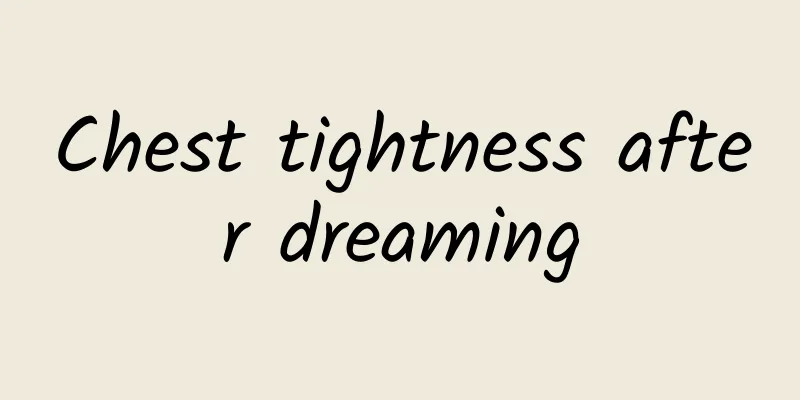What are the rehabilitation treatments for ankylosing spondylitis?

|
Ankylosing spondylitis is a type of seronegative spondyloarthropathy, which is mainly characterized by chronic inflammation of the axial joints and may also affect the internal organs and other tissues. It is more common in adolescents. So what are the rehabilitation treatments for ankylosing spondylitis? 1. General treatment Correct posture: Patients should pay attention to the correct posture of standing, lying and sitting in daily life and work. Patients with ankylosing spondylitis should use a hard bed, a low pillow or no pillow, avoid using a high pillow, sleep in a supine or prone position, not on the side, and maintain the physiological curvature of the spine. When walking, standing, and sitting in daily life, try to keep your head up, chest out, and stomach in. Practice standing with your back against a wall every day to maintain a good posture. Do not sit on low stools or sofas, and try to avoid spinal curvature. Avoid bending over for too long while working, avoid squatting, and reduce or stop physical activities that cause persistent pain. Appropriate exercise: Swimming is a very beneficial sport that can increase the flexibility of tendons and ligaments, and all joints and muscles can be exercised. It is a good form of exercise for patients with ankylosing spondylitis. Walking and cycling can enhance cardiopulmonary function, prevent or alleviate spinal and hip deformities, and are also good choices. Patients with ankylosing spondylitis are advised to avoid strenuous and high-intensity exercise, such as playing tennis, basketball, and table tennis. 2. Functional Training Appropriate functional exercise for patients with ankylosing spondylitis in the early stages can enhance the mobility of joints throughout the body, including the cervical spine, shoulder joints, lumbar spine, hip joints, and improve the range of motion of the spine and joints. Functional exercises should be targeted and provided with appropriate guidance based on the characteristics of the patient's affected joints. Each exercise should be done as tolerated by the patient, and the range of motion should be limited to a level that does not aggravate joint symptoms the next day. Before any activity, help the patient massage and loosen the paraspinal muscles and neck and back muscles and ligaments. If the patient's morning stiffness is relieved and the pain is not aggravated after activity, the amount of exercise can be gradually increased. 1. Thoracic Exercise Chest expansion exercise: Bring both forearms to the chest, elbows parallel to the shoulders, make fists with the palms facing down, move the chest flat twice, then spread the arms to the sides and shake them backwards twice. Then raise your left arm and let your right arm hang down, and shake both arms back as far as possible twice. Then raise your right arm and let your left arm hang down, and shake both arms back as far as possible twice. Stand with your feet shoulder-width apart, bend your elbows 90 degrees, and move your upper limbs backward as far as possible. Breathing exercises: The patient stands upright, draws in the abdomen and straightens the chest while taking a deep breath, exhales deeply when recovering, and does chest expansion exercises while taking a deep breath to increase the range of motion of the chest. Combine chest breathing and abdominal breathing, alternating between the two. 2. Physical exercise Depending on the patient's condition, push-ups, push-ups, lower limb flexion and extension, and back stretching exercises can be performed. Daily activities include jogging, swimming, and Tai Chi, which are all very suitable exercises for patients with ankylosing spondylitis. 3. Spinal segment flexibility and hip joint range of motion training When the hip joint functions well, it can effectively compensate for spinal dysfunction, including flexion and extension, lateral flexion and rotation exercises in all directions of the cervical and lumbar spine. (1) Stand with your feet shoulder-width apart, raise your arms, and push your upper body back as far as you can. (2) Lateral flexion, flexion, extension, and left and right slow rotation of the cervical spine to ensure normal mobility of the cervical spine. Sit down, turn your head to the left or right, look at your shoulders, and when the neck is flexed, keep your chin as close to your chest as possible, and extend your neck as far back as possible. Hold each direction for 15 seconds, and repeat 5 times. (3) Hold the wall with your left hand, lift your right leg, bend your right hip and knee joints as much as possible and lift them upward, swing your right leg and rotate your hip, then do the same with your left leg; (4) Stand upright with your back against a wall and do squatting exercises with your hips and knees bent. Move slowly and repeat. (5) When standing, bend the lumbar spine, rotate left and right, and extend it backward. When standing upright, bend forward and try to touch the ground with both hands; put your hands on your hips and bend your back to the left and right, alternating between the two. 3. Physical therapy Physical therapy methods such as hydrotherapy, wax therapy, and microwave therapy can relieve muscle stiffness and spasm and improve blood circulation. 1. Ultrashort wave: Ultrashort wave therapy uses high-frequency electric fields to generate heat on the surface and deep tissues of the body and heat them evenly, which can relieve pain, relieve spasms, and reduce inflammation; 2. Ultraviolet rays: irradiation of the spinal area with a medium erythematous dose has a significant therapeutic effect on pain in the spinal area; 3. Wax therapy: used in the recovery period, diseased spinal area or sacroiliac joint, wax cake method; 4. Medium frequency electrotherapy: interfering electricity, modulating medium frequency electricity, audio frequency electricity, placing electrodes on the lesion site, and the current dosage is based on the patient's tolerance; 5. Mineral bath: Take a full body bath, the water temperature should be 38-40℃, each time for 15-20 minutes, used for the recovery period. |
<<: What are the symptoms of itchy skin? What are the care methods?
>>: Can intestinal cleansing tea really help you lose weight? Why?
Recommend
How does calcified epithelioma come about?
Xiao Zhang has been very unhappy recently because...
Exercises to enhance ovarian function
Regular exercise for women can not only exercise ...
Can moxibustion remove facial freckles?
Now that you are around 30 years old, you will al...
Taiwan's Antrodia cinnamomea efficacy
In Taiwan, the influence of Antrodia cinnamomea i...
How to treat numbness in hands and feet due to cerebral infarction
Patients with cerebral infarction will show sympt...
How to have twins
Wanting twins is subject to many conditions. For ...
Soak your feet while doing moxibustion
Moxibustion is a health care method that many peo...
What water should be used to soak lemon slices and what are the effects of soaking in water
Everyone knows that drinking water soaked with le...
What to do if a meat ball grows inside a tooth cavity
A tooth cavity is a type of tooth decay or tooth ...
How to cure allergic rhinitis
Rhinitis is a stubborn disease. Many people in ou...
What harm does starvation weight loss do to the human body?
Starving yourself to lose weight is very bad for ...
What are the foods that replenish qi deficiency? These four are effective
The existence of Qi deficiency often makes people...
What are the symptoms of excessive stomach fire in babies?
Babies may also suffer from excessive stomach fir...
What anti-inflammatory medicine should I take if my foreskin is swollen?
The foreskin is a tissue unique to men. It is a l...
Is Yifang Yiqing effective?
Yifang Yiqing has both internal and external prop...









